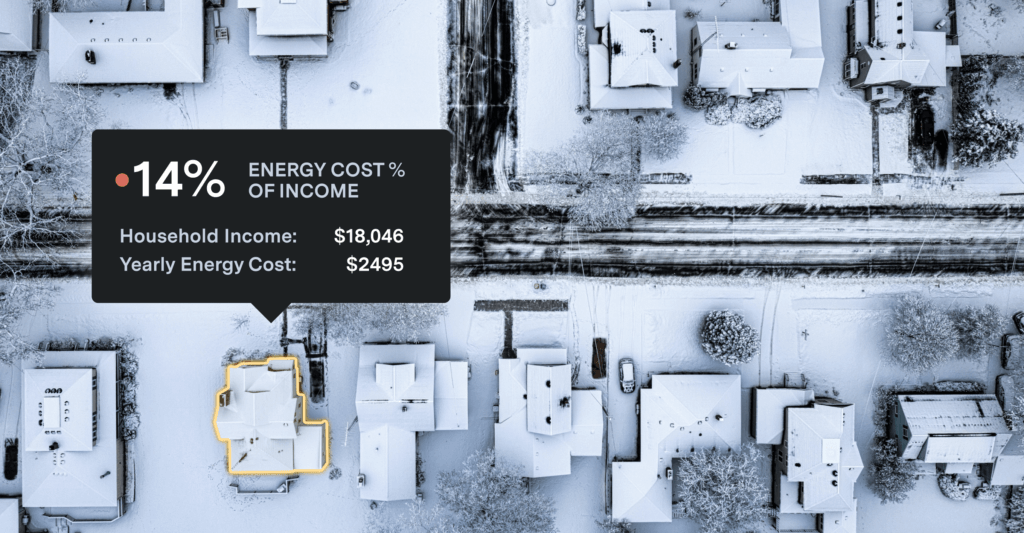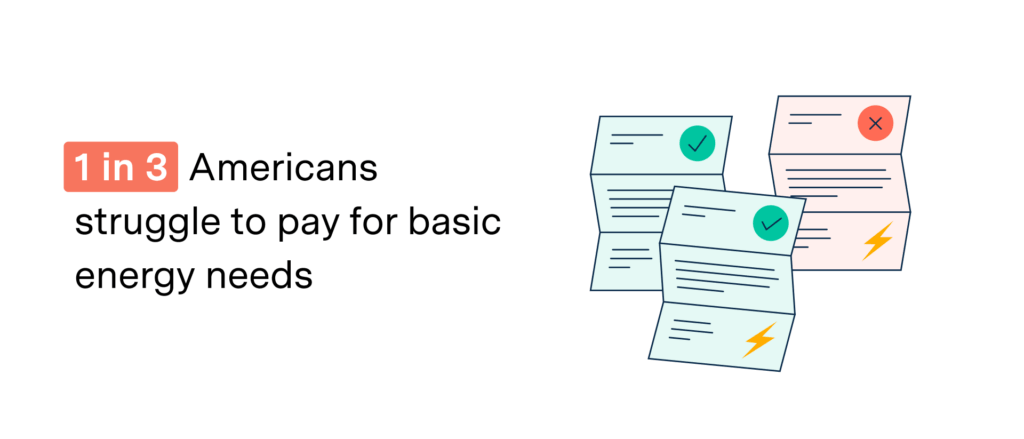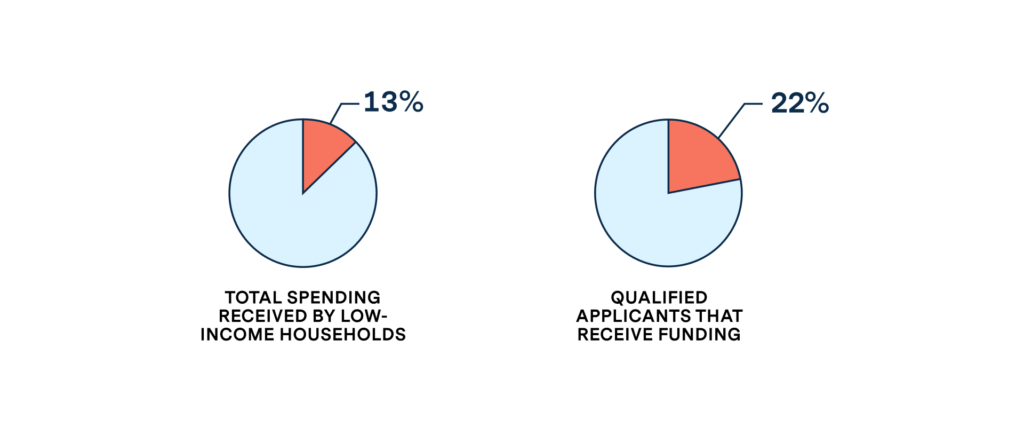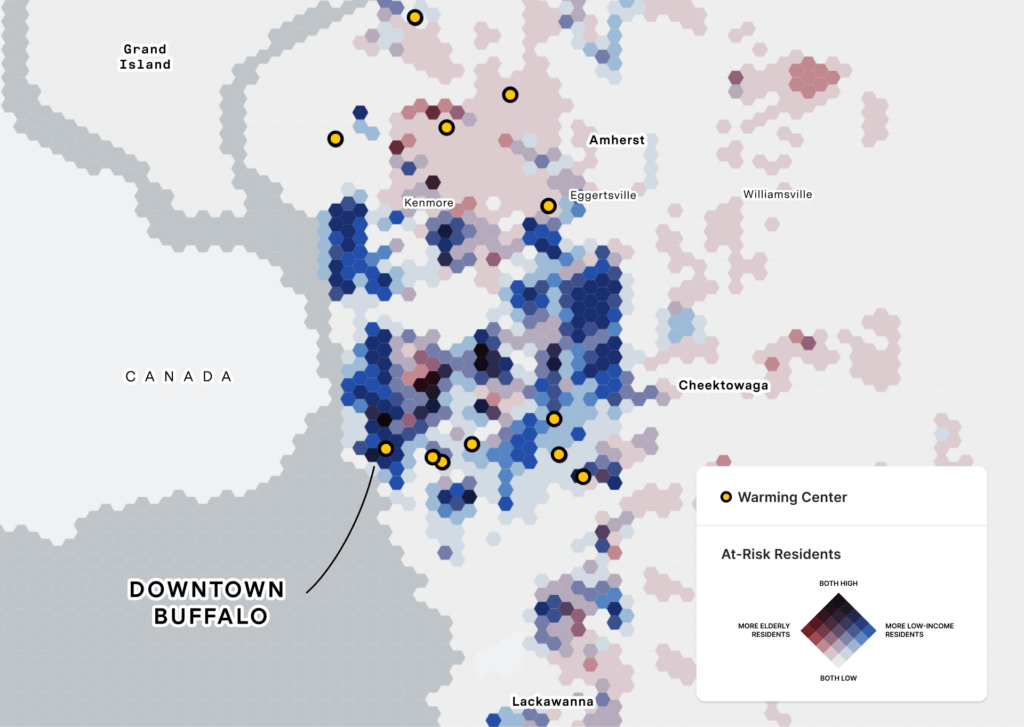
Communities across the United States have already been impacted by major storms this winter season. Newsrooms are reporting instances of record-setting snowfall and power outages, signaling that such events will dominate much of the media cycle until spring. With increasing intensity and duration, the effects from winter storms are leaving many households immobilized and vulnerable to extreme cold. But often, it’s regular, uneventful winter conditions that create season-long challenges for families on the margins.

While many households are budgeting for holiday gifts, parties, and vacations, roughly 25 million Americans are forgoing food and medicine expenses in order to pay their heating and energy bills – a number that is likely to rise as experts predict that this winter Americans will be paying the highest rate for heating in 25 years with fuel prices expected to surge nearly 30%. At-risk and low-income households across the country will inevitably face difficult budgeting choices, while their local governments and utilities strive to provide relief services.
Rising energy costs and the challenge of government assistance
A household experiencing ‘energy poverty’ spends 10% of their income or more on energy costs, with some families below the poverty line spending as much as 35% of their income on energy bills. While low-earnings are a contributing factor to this strain, energy poverty is not simply an income-to-spending ratio. Reports show that heating and cooling low-income dwellings can be as much as three times more expensive than other households. Renters are most affected by high energy costs, and often lack the means or authority to improve the conditions of their housing units.
Utilities, local governments and community-based organizations (CBOs) face multiple challenges when helping low-income and at-risk households with rising energy costs. The federal government introduced assistance programs in response to the 1970s energy crisis, including the Low Income Home Energy Assistance Program (LIHEAP), which provides financial assistance, and the Weatherization Assistance Program, which provides offsets and incentives for households pursuing building and appliance upgrades.
The demand for these programs is high and growing, yet assistance is falling short. About 27.5% of all U.S. households are low-income and therefore likely to experience energy poverty, yet this group receives only 13% of energy efficiency spending by utilities. Only 22% of households that apply and qualify for LIHEAP assistance actually receive aid, with low-income households facing multiple barriers to assistance.

Thousands of households eligible for aid don’t apply for it, often because of lack of knowledge and understanding about these programs. This is a major opportunity for local governments and utility providers to use intelligent, targeted outreach to enroll in-need households and efficiently distribute funds.
Winter months compound hardships for at-risk households
Balancing household budgets means making difficult choices, especially in winter months. In some areas of the country, such as the Ozarks, nearly 67% of households receiving food assistance will choose between food and energy bills, while others will stop taking prescribed medications in order to pay for heating.
Children and seniors are particularly at-risk of having their health and nutrition negatively affected by energy poverty. Winter events, like snow days, can result in skipped meals for children who rely on school meal programs. Amongst seniors, widows and older single women are most at-risk of being fuel poor, particularly when they are on low fixed incomes that fail to keep pace with inflation.
Communities of color face similar challenges at the intersection of health and energy poverty. Earlier this year, it looked like emergency Medicaid coverage for millions of Americans would lapse, leading to widespread churn as continuous enrollment would end before the 2022-2023 winter season. For now, the program remains in place, but for Medicaid recipients, the fear of losing health care coverage can be pronounced during winter months.
Timely action and the long lasting effects of winter storms
Winter storms can have long lasting effects on vulnerable communities, sometimes putting people at risk of eviction and into life-threatening exposure to the elements.
Many households continue to feel the impact of winter storms in the exorbitant energy bills they receive, and in the damages that they cannot repair. Low-income communities, for example, like many affected by the 2021 freeze in Texas, faced a greater risk of displacement and eviction during and after winter storms. Some cities, such as Seattle, have passed winter eviction moratoriums in attempts to protect vulnerable tenants from harsh elements if they are at-risk of being unhoused. Chicago sets limits on evictions based on temperature thresholds. But, in general, most localities have few to no protections against eviction based on weather or time of year.
Mobility and transportation challenges also limit the ability for at-risk populations, including seniors and low-income families, to receive emergency services. This includes access to warming centers, as well as food and medical services.

The current administration has pledged $4.5 billion to help with heating costs, but these funds are only as good as the sociodemographic data and outreach that is employed to administer funds. From immediate life-threatening conditions and food insecurity, to longer-term economic hardship and eviction, winter storms have the ability to significantly impact low-income households. In the cases outlined above, energy relief is too little too late for households facing chronic energy challenges.
Locating at-risk households before conditions worsen
Improving energy efficiency in low-income and underserved households is key to easing energy burdens, but the numbers clearly show that the communities with the greatest need are not receiving equitable funding. When trying to close the energy equity gap, assistance programs assume that individuals prioritize energy spending over other basic necessities. Utilities and local organizations are being called to improve outreach efforts and expand efficiency services to at-risk and low-income households.
With the help of granular socio-demographic location data, organizations can more easily target outreach and increase engagement in these critical programs. In particular, by overlaying estimates of eligible households with data on incoming applications or outgoing disbursements, organizations can understand, in real-time, where the greatest gaps between need and assistance persist. Agencies and their partners can then monitor and adjust their strategies on a near real-time basis.

For example, a person who participates or has family members who participate in other benefit programs, such as SNAP, SSI, TANF, may be automatically eligible. Using integrated eligibility data, program managers can proactively target these recipients to ensure they are aware of and enrolled for energy assistance.
When energy challenges arise, Never Wonder Where…
Governments and utilities must take control of housing stability in their communities this winter by leveraging community data and vulnerability insights across assistance programs. Knowing who is at-risk before a storm hits, means helping those households most in need before resources are strained during extreme events.
UrbanFootprint Assist for governments, utilities, and community partners can answer critical questions at the intersection of climate change, social equity, and community resilience.








